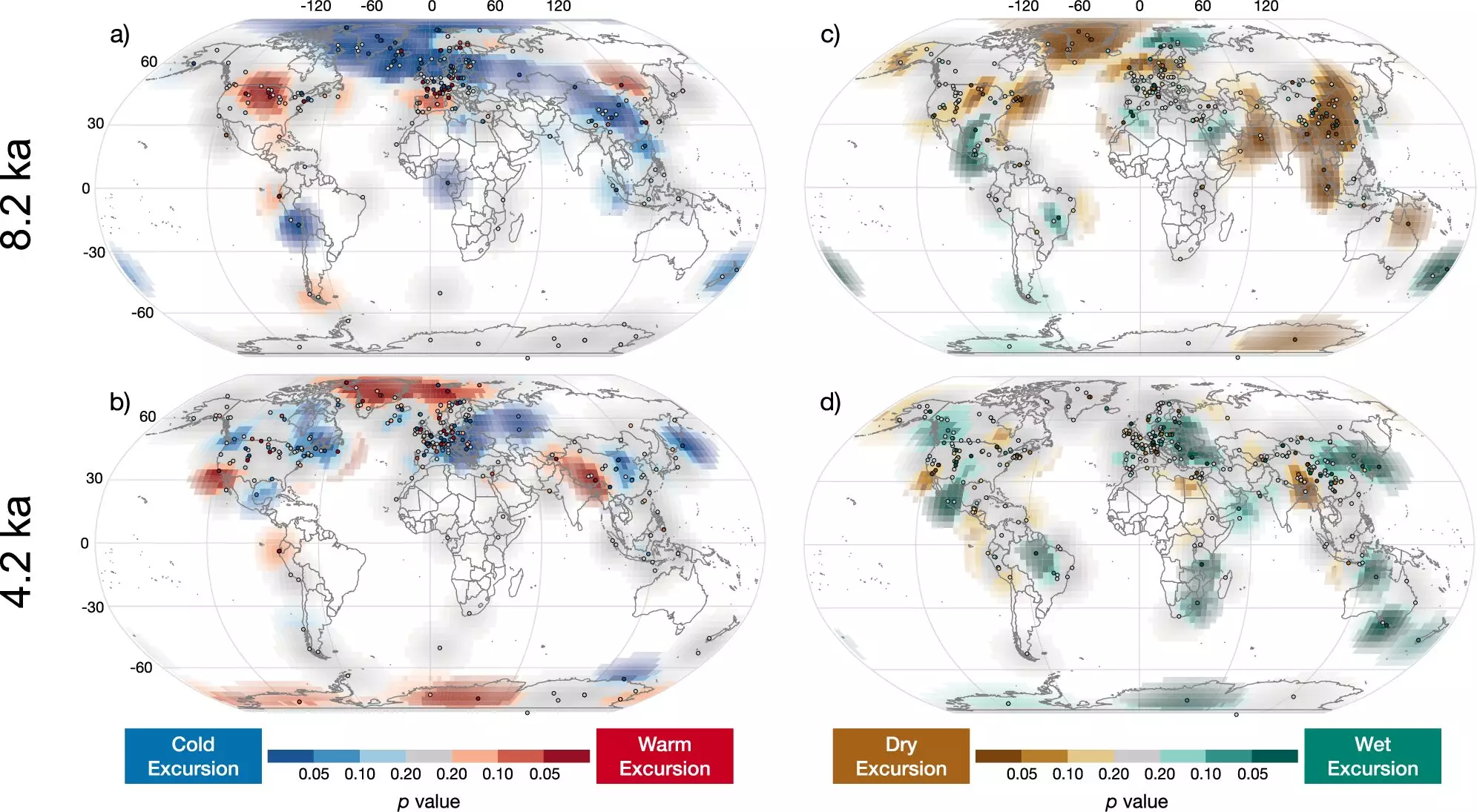The concept of the 4.2 kiloyear (ka) event, a significant megadrought that occurred roughly 4,200 years ago, has traditionally been portrayed as a devastating moment in Earth’s climatic history. Several theories argue it catalyzed the collapse of early civilizations and precipitated extensive, long-lasting climate shifts worldwide. The weight of this event has led many historians and geologists to label it as a critical geological marker, signifying a major transition within the Holocene epoch, which commenced approximately 11,700 years ago. However, a groundbreaking study conducted by researchers at Northern Arizona University (NAU) challenges this long-held narrative, offering a nuanced understanding of the megadrought’s impacts.
In a recent paper published in *Nature Communications*, researchers present findings indicating that the 4.2 ka event, while indeed occurring, may not have had the catastrophic worldwide repercussions previously assumed. The lead author Nicholas McKay and his team posited that rather than signifying a singular, planetary upheaval, this event was just one among many climatic anomalies during the Holocene. The implications of this paradigm shift are profound, as they suggest that the understanding of droughts and climate events in historical contexts requires a more localized perspective.
This revelation emerged from a collaborative and innovative educational initiative at NAU, where research was integrated into a graduate-level coursework. Students conducted hands-on analysis of a vast pool of climate data, deeply engaging with the material and contributing to the research process. As they sifted through more than 1,000 datasets, they developed enhanced methodologies for identifying and evaluating climate events, laying the groundwork for a more sophisticated understanding of historical weather patterns.
The crux of the new findings lies in understanding the distinction between localized climate changes and broader global phenomena. The research team’s analysis indicated that while some regions experienced the effects of the 4.2 ka event, others exhibited little to no impact. For those locales that did display noticeable changes, the nature of these changes varied considerably, challenging the notion of a singular catastrophic event.
Moreover, McKay and his associates discovered that throughout the Holocene, various significant climate events—such as the well-acknowledged 8.2 ka event—erupted contemporaneously, underlining the complexity of Earth’s climatic history. Importantly, the study emphasizes that abrupt climate changes are not rare occurrences; rather, they were common across different periods, albeit with varying localized effects.
The study presents a stark reminder of the importance of employing rigorous, data-driven methodologies when interpreting climatic history. Co-author Leah Marshall stresses the need for caution in extrapolating local climatic anomalies into broader global patterns, suggesting that such correlations can lead to mischaracterizations of historical climatic stability and upheaval. This re-evaluation not only reshapes the existing narrative surrounding the 4.2 ka megadrought but also serves as a cautionary tale regarding the broader implications of interpreting climate data.
One of the pivotal discussions emerging from this research is how understanding past climate variability is crucial for predicting future climate scenarios. The study contends that while natural climate changes may occur over centuries without uniformly affecting the globe, human-induced climate changes are unprecedented in their global scale and intensity. Recognizing the dual influence of historical and anthropogenic factors on climate dynamics will be essential for informing future climate models.
The insights produced through this collaborative research endeavor extend beyond academic discussion. The methodologies developed and shared by the NAU team promise to enhance future research efforts aimed at deciphering past climate conditions, offering valuable tools to investigate extensive climatic datasets.
As researchers move toward addressing contemporary climate challenges, the study posits that a better understanding of historic climate events will inform our knowledge of potential future shifts in climatic patterns. The nuanced understanding of the 4.2 ka event’s impacts stands as an integral piece of this puzzle—a reminder that history holds the keys to navigating the uncertainties of climate change.
The re-examination of the 4.2 ka megadrought illustrates the necessity of constant inquiry and analysis in climate science. Just as the natural world is in continual flux, so too is our understanding of it. This research underscores the value of collaborative efforts in academia—not only for producing meaningful findings but also for nurturing the next generation of scientists equipped to confront the pressing environmental challenges of our time.


Leave a Reply